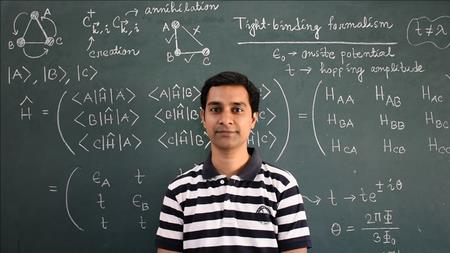Nagaland University's New Research To Aid Advancement Of Quantum Tech For Devices, Algorithms
With India already committed to advancing next-generation technologies through the National Quantum Mission, the new research could contribute meaningfully to the development of future quantum devices and algorithms, said the team
Fractals are not just mathematical curiosities, but blueprints found across nature -- from the branching of rivers and lightning strikes to the growth of plants and neurons.
By bringing these naturally occurring patterns into the quantum realm, the research bridges the gap between fundamental physics and practical technology, demonstrating how lessons from nature can inspire the next generation of computing and electronics.
The findings will help researchers explore how amorphous non-crystalline materials can be engineered for quantum technologies, thereby expanding the material base for India's and the world's quantum innovation efforts.
“Fractals are naturally occurring patterns that repeat themselves at different scales, seen in structures like coastlines, leaves, and blood vessels. In this research, I have used quantum mechanics to simulate how electrons behave under a magnetic field within such fractal systems. This approach is unique because most research in quantum devices relies on crystalline materials,” said Dr. Biplab Pal, Assistant Professor, Department of Physics, School of Sciences, Nagaland University.
“This work shows that non-crystalline, amorphous materials can also be effectively used to design nanoelectronic quantum devices,” he added.
The researchers noted that the study opens exciting possibilities in quantum devices: designing molecular fractal-based nanoelectronic devices.
It may also aid in quantum algorithms and information processing: better control over electron states for future computing applications; and Aharonov-Bohm Caging effect: trapping electrons in fractal geometries, a phenomenon that could be harnessed in quantum memory and logic devices.
The study has been published in the peer-reviewed international scientific journal Physica Status Solidi – Rapid Research Letters.

Legal Disclaimer:
MENAFN provides the
information “as is” without warranty of any kind. We do not accept
any responsibility or liability for the accuracy, content, images,
videos, licenses, completeness, legality, or reliability of the information
contained in this article. If you have any complaints or copyright
issues related to this article, kindly contact the provider above.
Most popular stories
Market Research

- From Zero To Crypto Hero In 25 Minutes: Changelly Introduces A Free Gamified Crash Course
- Smart Indoor Gardens Market Growth: Size, Trends, And Forecast 20252033
- Red Lions Capital And Neovision Launch DIP.Market Following ADGM Regulatory Notification
- Poppy Seed Market Size, Share, In-Depth Insights, Opportunity And Forecast 2025-2033
- Blockchainfx Raises $7.24M In Presale As First Multi-Asset Super App Connecting Crypto, Stocks, And Forex Goes Live In Beta
- Alchemy Markets Launches Tradingview Integration For Direct Chart-Based Trading






















Comments
No comment